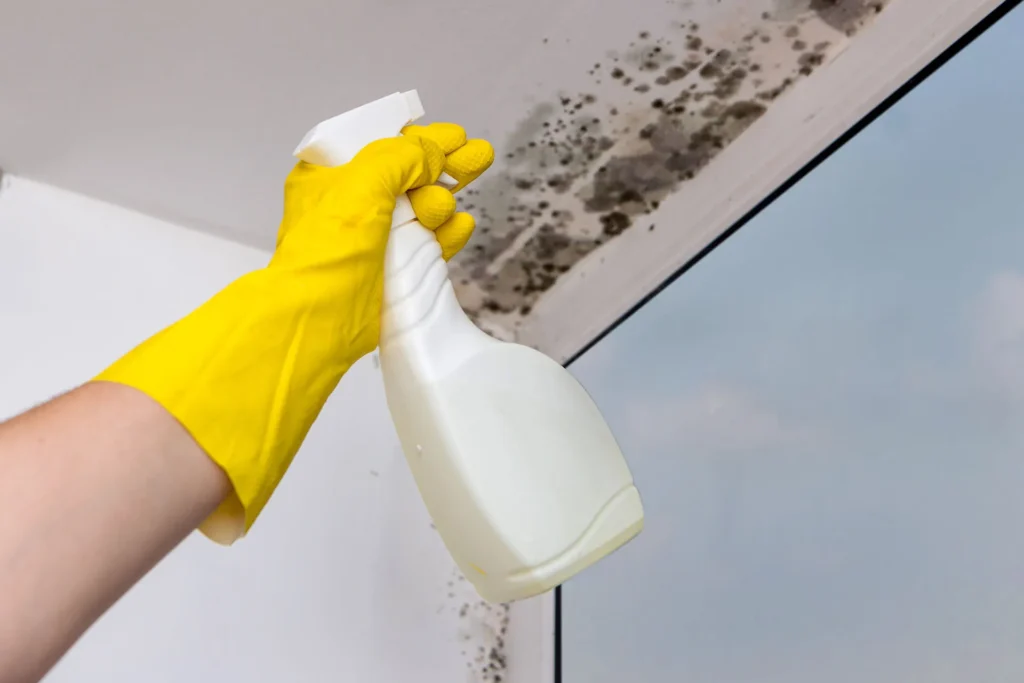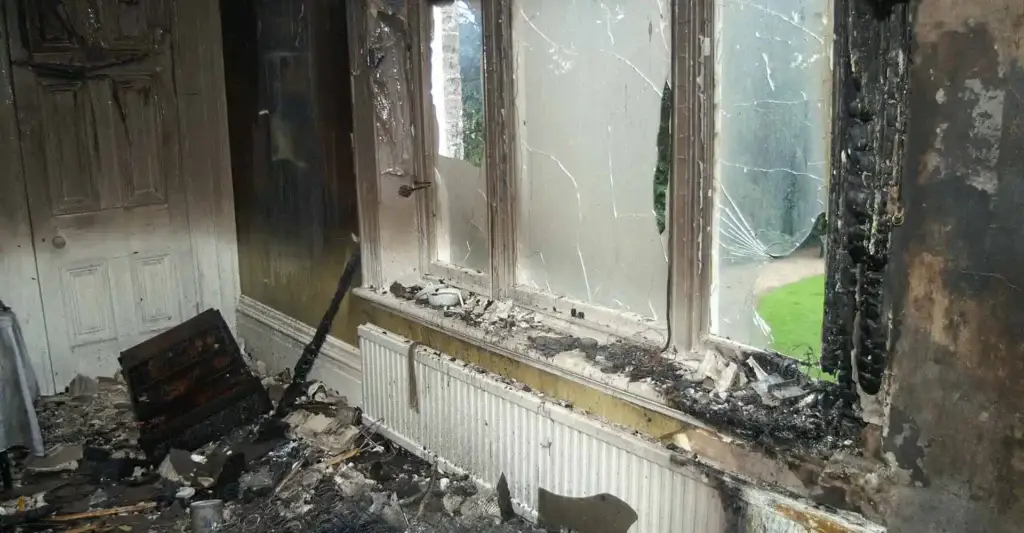If you’ve found mould in your property, you’re not alone, and you’re not overreacting.
It’s one of the most common household issues in the UK, yet one of the least understood when it comes to cost.
A quick Google search turns up everything from £100 ‘clean-ups’ to £3,000+ ‘full remediation packages’. So what’s realistic, and how do you know you’re paying for a permanent fix, not a temporary patch-up?
This guide breaks down the true cost of professional mould remediation, explains what that cost actually covers, and shows why professional help is often the smartest financial and health decision you can make.
Skip to:
Average UK costs for professional mould remediation
Health & legal context – why action matters
Average UK costs for professional mould remediation
For reference, here’s what most UK homeowners and landlords can expect to pay for professional mould work:
- Small, surface-level problems: Usually between £300 and £450. This covers localised treatment, surface cleaning, and application of antimicrobial products to stop regrowth.
- Medium contamination: Typically £600 to £1,200. This includes multi-room remediation, targeted drying, and limited removal of affected materials.
- Extensive or structural issues: From £1,500 up to £5,000 or more, depending on the scale. At this level, the service usually involves full-property containment, HEPA air filtration, dehumidification, and verification testing once work is complete.
- Diagnostic survey only: Around £150 to £300. This involves a professional inspection with moisture mapping, possible thermal imaging, and a written report outlining findings and next steps.
These figures represent typical 2025 UK averages and will vary depending on region, property type, access, and the severity of the mould problem.
Why the cost varies
No two mould jobs are the same. Costs can shift quite a bit depending on how serious the contamination is and what’s causing it. Here are the main factors that make the biggest difference.
1. Extent of the problem
A small patch of mould on a bathroom ceiling is quick to treat, while a full-house infestation caused by long-term damp can take days. Larger jobs need containment barriers, filtration systems, and extra labour, all of which add to the cost.
2. Source of moisture
If the problem is just condensation, treatment is straightforward. But if there’s a leak, rising damp, or flood damage, the service must include drying or repairs before the mould can be permanently removed, which pushes up the overall price.
3. Property construction
Older UK homes with solid brick walls or poor insulation hold moisture differently than newer builds. Hidden cavities or timber frames may need extra investigation and drying time, increasing labour hours.
4. Type of mould
Certain species, like Stachybotrys chartarum (black mould) or Fusarium (red mould), produce toxins that require strict safety measures, PPE, and specialist filtration. This makes treatment more time-intensive and therefore more expensive.
5. Location
Where you live also plays a role. Labour and travel costs in London and the South East are usually 10 – 15 % higher than the national average. Rural areas can sometimes be cheaper, though response times may be slower.
What you’re paying for
When you hire a professional mould remediation company, you’re not just paying for a deep clean; you’re investing in a controlled environmental restoration that removes the contamination, fixes the cause, and prevents it from returning.
A reputable service typically includes:
- Inspection and moisture testing: Using specialist tools to pinpoint the source of damp and map how far the mould has spread.
- Containment setup: Sealing off affected areas to stop spores travelling through the rest of the property.
- HEPA-grade air filtration: Capturing airborne spores to restore safe, breathable air quality.
- Targeted removal and surface treatment: Safely removing or sealing contaminated materials and applying industry-grade antimicrobial solutions.
- Drying and ventilation improvements: Lowering humidity and increasing airflow so mould can’t regrow.
- Final verification: Air-quality checks, photographs, and documentation confirming that the environment is clear and safe.
In short, you’re paying for certainty. This means you get certainty that the root cause has been fixed, the air is clean, and the problem won’t come back.
Is it worth the cost?
At first glance, DIY mould sprays look cheaper and for very small, surface-level problems, they can help temporarily. But they rarely reach hidden mould or fix the moisture issue that caused it. The result? The mould comes back, often worse than before.
Here’s how DIY cleaning compares to professional mould remediation in real terms.
DIY cleaning:
- Usually costs between £10 and £50 for sprays, sponges, and protective gear.
- Removes only the visible mould on the surface.
- Doesn’t address underlying damp, leaks, or humidity.
- Carries a high risk of recurrence because spores stay active and spread easily.
- Provides no certification, report, or long-term reassurance.
Professional remediation:
- Typically costs £300 to £1,500, depending on the property and extent of contamination.
- Targets both visible mould and hidden spores using HEPA filtration and containment.
- Fixes the root cause of moisture to prevent the problem from returning.
- Includes professional verification, documentation, and advice for long-term prevention.
- Offers lasting protection for your health, property, and compliance requirements.
Considering that untreated mould can damage property value, trigger respiratory issues, and lead to repeat cleaning costs, professional remediation almost always pays for itself.

Health & legal context – why action matters
Mould isn’t just unsightly, it’s now recognised as a serious health and housing safety issue in the UK. Taking quick action isn’t optional anymore; it’s a responsibility shared by landlords, homeowners, and tenants alike.
The health impact:
- Around 4% of English homes have damp or mould problems (English Housing Survey 2024).
- The Royal College of Paediatrics and Child Health links poor housing and mould exposure to around 8% of childhood asthma cases.
- The NHS spends over £1 billion each year treating illnesses linked to poor housing conditions, including mould-related respiratory diseases.
- Long-term exposure can aggravate asthma, trigger allergies, and affect vulnerable residents such as children, the elderly, and those with existing health conditions.
The legal context:
Following the death of two-year-old Awaab Ishak in Rochdale in 2020, the UK government introduced Awaab’s Law, which came into force in October 2025.
Under this law, social landlords must investigate any reported damp or mould issues within 10 working days and carry out necessary repairs within set timeframes.
Although designed for social housing, Awaab’s Law has created a nationwide benchmark for how mould should be handled in all homes. It sends a clear message: ignoring mould is no longer acceptable. Delays can now be considered a breach of duty of care, putting both residents and landlords at legal and financial risk.
To learn more about Awaab’s Law, visit our Awaab’s Law hub which contains information for social landlords, private landlords and tenants.
What it means for you:
Whether you’re a landlord, tenant, or homeowner, professional action is the safest and most responsible response. Tackling mould quickly doesn’t just protect walls and ceilings; it protects health, prevents costly repairs, and ensures compliance with modern UK housing standards. Early intervention demonstrates diligence, safeguards wellbeing, and keeps your property legally sound.
When to bring in a professional immediately
Call an expert if you notice:
- Mould larger than one square metre
- A strong musty odour even after cleaning
- Recurring spots within weeks of DIY treatment
- Visible mould on ceilings, behind wardrobes, or near vents
- Any occupant experiencing asthma or a persistent cough
The earlier you act, the lower the total cost.
Insurance and compliance
If mould arises from a sudden incident (burst pipe, flood), your insurer may cover professional remediation. Gradual condensation or ventilation issues are usually excluded, but a professional inspection report often strengthens claims.
Landlords benefit too: proper documentation shows compliance with Housing Health and Safety Rating System (HHSRS) obligations.
Final takeaway
Mould isn’t just a surface issue; it’s a cycle of damage, health risk, and hidden cost that only ends when the root cause is professionally fixed.
Professional remediation breaks that cycle for good. It removes contamination safely, restores healthy air quality, and prevents the mould from returning. For most UK homes, one certified treatment is far more cost-effective and far safer than repeating DIY “quick fixes” that never solve the problem.
If you’ve noticed mould coming back after cleaning, or you’re concerned about compliance under Awaab’s Law, now is the time to act. Every week you wait increases the potential for further damage, health symptoms, and repair costs.
Prefer to speak to someone directly?
Call our team on 01622 926 505 for immediate advice and same-day scheduling.
FAQs for mould remediation and cost
Is professional mould remediation always necessary?
If mould keeps returning or covers more than a small, visible patch, professional remediation is strongly recommended. Experts don’t just remove surface mould, they identify and eliminate hidden spores and moisture sources that standard cleaning can’t reach.
How much does an inspection or survey cost?
Professional mould surveys/inspections typically range from £100 to £250, depending on the size of the property and the type of assessment required. The survey includes a detailed moisture analysis and report outlining the cause of the issue and the most effective treatment options.
How long does professional treatment take?
Smaller, localised jobs can usually be completed within half a day. Larger or more complex remediations, such as whole-property work or cases involving structural drying, may take two to five days, depending on the severity of the problem and drying times.
Will the work smell or disrupt my household?
Professional mould remediation is designed to be safe, low-odour, and minimally disruptive. Antimicrobial solutions are formulated to avoid harsh smells, and containment systems prevent dust or spores from spreading to other parts of your home.
Does professional mould remediation guarantee it won’t return?
While no one can prevent future leaks or damp entirely, a properly completed professional remediation should stop mould from returning. By addressing both the contamination and its root cause, the environment is restored to safe, dry conditions. Many reputable companies, including Ideal Response, provide documentation confirming that the treated areas meet healthy living standards.

Chris Hedges - Head of Marketing
With over 25 years' experience, Chris is adept at defining and driving strategy, while also enjoying hands-on operational delivery. He believes in an equal blend of creativity and analytical scrutiny, always finding inventive ways to achieve objectives, underpinned by evidence. Chris’s philosophies are simple: don't overcomplicate, always prioritise customer experience, and bend the rules just enough to cut through the noise and drive momentum and growth.





















